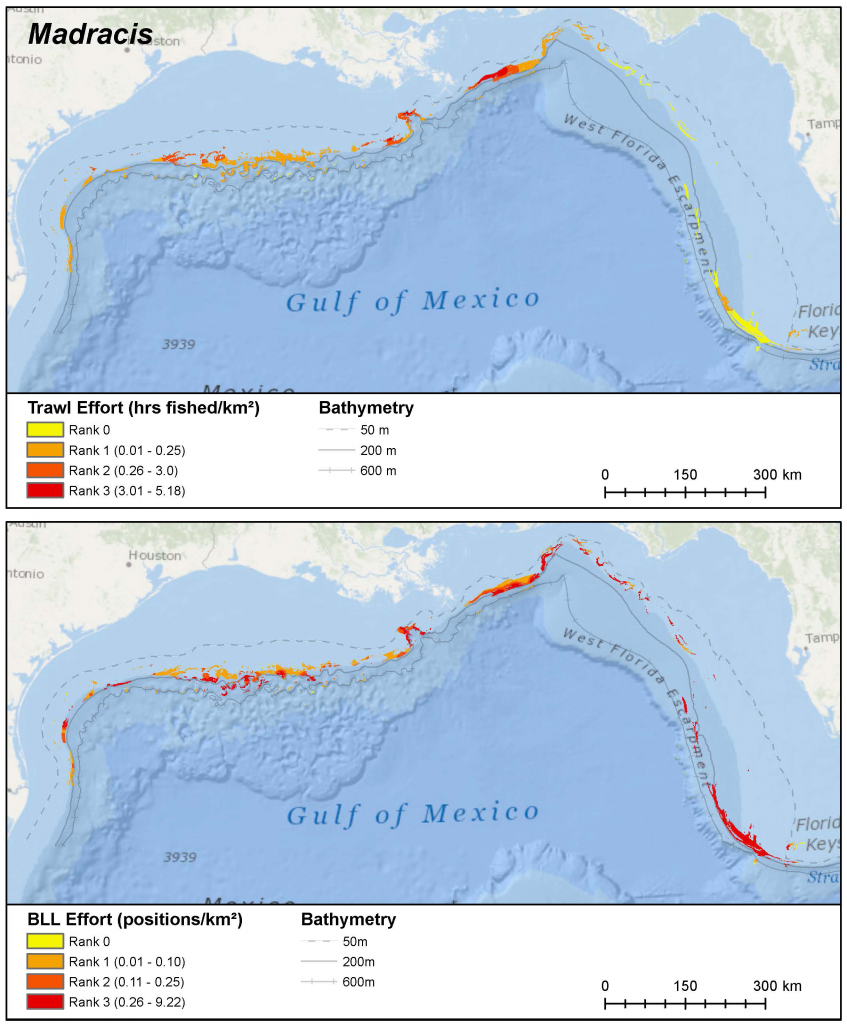
NCCOS scientists recently examined the spatial aspect of eight years of commercial trawl and six years of bottom long-line fishing data and identified geographic areas of potential conflict with known and predicted deep coral communities in the Gulf of Mexico.
Bottom fishing gear, such as trawls and long lines, can have lasting impacts on benthic communities, especially slow-growing, low-mobility species, such as corals. NOAA’s Deep Sea Coral Research and Technology Program has identified the need to know where bottom-contact, commercial fishing takes place and how it may impact deep coral communities.
The researchers found that bottom fishing spatially coincided with three of the four coral groups examined, primarily located in deep waters of the central Gulf of Mexico. The findings will support efforts to protect areas with abundant or diverse coral communities.
In addition to fishing, the oil, gas, and mining industries also compete with deep coral communities for seafloor space. The report highlights the importance of understanding the distribution and ecology of coral communities and their spatial overlap with potentially multiple, anthropogenic stressors.
For more information, contact Randy.Clark@noaa.gov.
